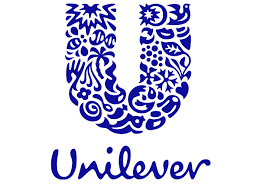June 28, 2023 (MLN): Pakistan’s stock market remained in a tight range-bound environment during fiscal year 2023 amidst a challenging economic landscape and political uncertainty throughout the year.
The benchmark KSE-100 index posted a remarkably dull performance, closing FY23 at 41,452.69 points, with a meager 88 points or 0.21% decline.
However, the market return in dollar terms during the year declined by around 29% YoY, due to instability in USD/PKR parity.
Throughout the year, the index remained under pressure as investors seemed jittery about political uncertainty, delays in the IMF loan program, high inflation, tightening monetary policy measures, external sector challenges, soaring fiscal deficits, PKR depreciation, and rapid depletion of foreign reserves.
PSX Performance
Top Scrip gainers & Losers:
| Companies | Changes |
|---|---|
| PGLC | +192% |
| COLG | +74% |
| JDWS | +67% |
| IBFL | +62% |
| LOTCHEM | +55% |
| SEARL | -56% |
| PSMC | -55% |
| HCAR | -53% |
| PSEL | -50% |
| AIRLINK | -50% |
Top sector gainers & losers
| Sectors | Changes |
|---|---|
| Misc. | +44% |
| Real Estate | +37% |
| Fertilizer | +14% |
| Modaraba | +11% |
| Vanaspati | -54% |
| Cable & Electric | -48% |
| Refinery | -48% |
| Transport | -47% |
| Inv. Banks | -47% |
| Cement | -44% |
The average traded volume of the KSE All index at the end of FY23 stood at 192m shares, down by 34% YoY, while the average daily traded value dropped to $25m, falling by 54% YoY.
In terms of index contribution, the top sectors throughout the fiscal year were Power, Fertilizer, Cement, Technology, and Inv. banks / Inv. cos / Securities. cos with 554pts, 504pts, 367pts, 313pts, and 262pts respectively.
On the flip side, negative contributors during FY23 were Pharmaceuticals, Miscellaneous, Automobile Assembler, Refinery, and Food with -555pts, -440pts, -305pts, -161pts, and -156pts respectively.
The best-performing stocks based on points added during the year were HUBC, ENGRO, UBL, COLG, and DAWH with 647pts, 529pts, 426pts, 327pts, and 298pts respectively.
Whereas PSEL, PSO, EPCL, SEARL, and HBL with -417pts, -285pts, -238pts, -231pts, and -226pts respectively took home the unwanted title of worst-performing scrips.
Scrip-wise, volume was led by KEL, CNERGY, TRG, UNITY, and MLCF with 2.03bn, 1.83bn, 1.39bn, 1.13bn, and 977.47m shares respectively.
Sector-wise, volume was led by Commercial Banks, Power Generation & Distribution, Cement, Technology & Communication, and Refinery with 2.24bn, 3.01bn, 2.79bn, 2.41bn, and 2.29bn shares respectively.
The State of the Economy: Key Indicators and Trends
| Annual Indicators | ||
|---|---|---|
| FY23 | FY22 | |
| GDP Growth Rate | 0.29 | 6.10 |
| Agriculture | 1.55 | 4.27 |
| Manufacturing | -3.91 | 10.86 |
| Commodity Sector | -0.51 | 5.43 |
| Services Sector | 0.86 | 6.59 |
| Trade Balance * (July – May) | -25,830.00 | -43,409.00 |
| Worker Remittances * (July – May) | 24,831.93 | 28,489.23 |
| Foreign Investment * (July – May) | 294.10 | 1,655.22 |
| Current Account Balance * (July – May) | -2,943.00 | -15,160.00 |
| Annual Inflation Rate % (July – May) | 29.16 | 11.29 |
| * Amount in USD Million | ||
CPI & Interest Rates at a record high
The consumer price index (CPI) for the month of May 2023 soared to 38% YoY.
This brought 11MFY23 average inflation to 29% as against 11.3% in the corresponding period last year.
During FY23, the monetary policy committee hiked the benchmark policy rate by a staggering 825bps taking it to a historic high level of 22%.
GDP
Pakistan’s provisional GDP grew at 0.29% in FY23 as compared to 6.1% in FY22.
The size of Pakistan’s economy (nominal GDP) increased to Rs84.7trn in FY23 as compared to Rs66.6trn recorded in FY22. While in dollar terms, it decreased by $33.4 billion or 8.91%, from $375bn in FY22 to $341.6bn in FY23.
Meanwhile, per capita income stood at $1,568 in 2023 as compared to $1,766 in the previous year depicting a decrease of 11.38% YoY.
This was the third lowest per capita income in a decade, with the lowest in the decade being $1458 achieved in FY20 due to covid, whereas the highest achieved was $1768 in FY18.
Foreign exchange reserves
Total liquid foreign exchange reserves depleted by Rs6.59bn to stand at just Rs8.86bn as compared to Rs15.45bn at the start of FY23.
Similarly, the SBP reserves have diminished by Rs6.28bn to stand at just Rs3.53bn as compared to Rs9.81bn at the start of FY23.
Fiscal deficit eased to 3.6% of GDP in 9MFY23
Pakistan’s overall fiscal deficit in 9MFY23 stood at Rs3,078.7 billion (3.6% of GDP) against Rs2,565.6bn (3.9% of GDP) in 9MFY22, showing an increase of 20.03% YoY.
During Jul-Mar FY23, the government's primary balance recorded a surplus of Rs503.8bn or 0.6% of GDP compared to a primary deficit of Rs447.2bn (0.7% of GDP) in the same period the previous fiscal year.
Total revenue with growth of 18% in 9MFY23 stood at Rs6.9tr against Rs5.9tr in 9MFY22.
Total expenditure went up by 19% YoY to Rs10tr.
The current account, third consecutive surplus
The current account recorded a surplus for the third consecutive month in May 2023.
Within 11MFY23, the current account deficit reduced to $2.94bn compared to the deficit of $15.16bn in the same period last year, shrinking by 81% YoY.
The trade deficit in goods narrowed by around 43.17% YoY.
Meanwhile, the trade balance in services also remained negative, down by 61.8% YoY.
Furthermore, the worker’s remittances fell by 10.35% YoY.
On a cumulative basis during 11MFY23, remittances by overseas Pakistanis moved down by 13% YoY to $24.83bn from $28.48bn recorded in the same period last year.
Foreign and Local Investors Portfolio Investments (LIPI, FIPI)
In terms of foreign investors’ portfolio investment, there were significant changes observed across various categories.
Individuals and organizations recorded the highest buying activity, as they continued to show confidence in the market. Individuals increased their portfolio investment by $71.19m, while insurance companies and mutual funds stood on the other side of the spectrum.
Insurance companies and mutual funds were the top sellers, recording a net selling of $117.46m and $125.36m respectively.
Meanwhile, companies, including both local and foreign entities claimed the second spot in adding to their portfolio investments, exhibiting a significant rise of $69.56m.
Among foreign investors, foreign corporates sold $2.5m in their portfolio investment, while foreign individuals witnessed a substantial increase of $11.65m.
Overseas Pakistanis also showed a positive trend, with their portfolio investment rising by $19.46m.
Banks and Development Financial Institutions (DFIs) displayed a strong interest in the equity market, as their portfolio investment surged by $67.62m.
Broker proprietary trading experienced a modest increase of $1.07m, indicating active involvement in the market.
Non-Banking Financial Companies (NBFCs) experienced a decline in their portfolio investment by $2.69m.
However, other organizations displayed a positive outlook, with their portfolio investment adding $6.53m.
By Investor (Regular Market)
By Sector (Regular Market)
Future Outlook
Investors are closely monitoring the resumption of the IMF loan program, with Pakistan's ninth review under the 2019 Extended Fund Facility (EFF) expiring on June 30, 2023, which aims to secure a $1.2bn tranche release from the IMF.
The successful resumption of the IMF program will bring the much-needed inflow for the country, as well as create opportunities for various other sources of inflows.
These inflows will contribute to boosting the country’s foreign exchange reserves and potentially alleviate the pressure on the external front.
Moreover, the market is also awaiting general elections.
Meanwhile, on the economic front, in the coming months, headline inflation is anticipated to recede primarily as a result of the high base effect coming into play.
“Going forward, key risks to overall inflation are high food and energy prices, the impact of budgetary measures, and a weaker currency. FY24 expected CPI is 20.3%,” Arif Habib Limited in its latest report noted.
“We believe interest rates have peaked at 22% and with headline inflation expected to recede mainly due to base effect, interest rates are anticipated to also come down by 400-500bps to 17-18% by FY24 end.” the report added.
The P/E ratio for the KSE-100 Index is currently at its lowest point in June 2023 (3.9x) compared to the 10Y average P/E of 9.73x.
Valuations have fallen so much that the KSE-100 Index is the world’s cheapest equity benchmark.
Due to the highly efficient nature of financial markets, some market experts believe the default has already been priced in.
“The equity markets have seemingly priced in a default if we compare to countries which have recently experienced the same, such as Sri Lanka and Ghana,” Mustafa Pasha, chief investment officer at Lakson Investments Ltd told Bloomberg.
Meanwhile, currently, banks are trading at 0.5x P/B and 2.8x P/E vs. their historic 10-yr average of 1.07x P/B and 7.8x P/E.
KSE-100 Daily time-frame chart
KSE-100 Weekly time-frame chart
Copyright Mettis Link News
Posted on: 2023-06-28T22:24:20+05:00

















